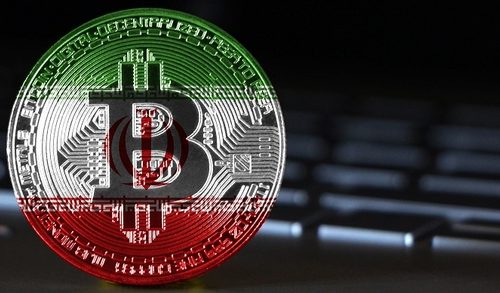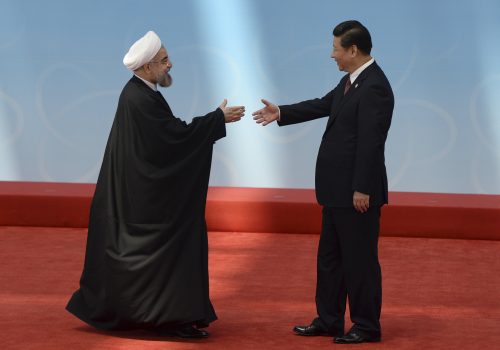Iran’s muddled relationship with cryptocurrency is self-inflicted
On June 2, a member of parliament from Tabriz, Mohammad Hossein Farhangi, urged Iran’s Central Bank to take cryptocurrency seriously because of its potential economic opportunities for the country. His statements highlighted that there are several ways through which Iran could benefit from cryptocurrencies. Yet, Iran is not exploring any of them effectively—why not?
The short answer is that, on an institutional level, Iranian policymakers are having a very difficult time understanding how blockchain technology works. As a result, they are unable to take advantage of its benefits and mitigate its risks. For instance, wariness of its potential to facilitate capital flight and otherwise undermine the country’s vulnerable economic system led parliament to prohibit individuals from using cryptocurrency at all in May. Understandably, the population is less apprehensive.
Crypto subculture
In Tehran, as in any other major city, there is a bustling subculture of blockchain and cryptocurrency enthusiasts. Formal organizations exist, such as the Iranian Blockchain Association, as well as less formal groups of researchers, students, investors, and hobbyists. Such groups meet regularly in local restaurants, host podcasts, and operate dedicated news sites, like CoinIran. There, they discuss the latest tech, debate the virtues of competing cryptocurrencies, and share investment tips and warnings about scams. In June 2019, there were even reports of cryptocurrency mining operations being set up in mosques.
However, the legality of mining cryptocurrencies, just like using them to conduct transactions, is questionable and inconsistent. On June 3, a plan was announced by which mining was, again, legalized. As a result, pending penal cases for those who had been mining illegally were slated to be dropped and their equipment returned. Such equipment includes mining rigs, which are computers built around specialized microprocessing chips designed specifically to complete the algorithmic calculations that yield cryptocurrency. Characteristically, the details, such as which equipment will be allowed to be used, are still being worked out.
Cryptocurrency mining
In 2018, Iran recognized cryptocurrency mining as a legal industry in order to monitor and regulate the mining farms that were already operating within the country. It also discussed creating its own national cryptocurrency, which it has yet to do. At the time, Iran seemed to be a great place to mine cryptocurrency because of its subsidized electricity prices (mining requires industrial amounts of electricity). Iran’s low electricity prices brought down the high operating costs so much that companies from China, Poland, Russia, and other countries set up shop in Iran, plugging their facilities directly into power plants. However, in 2019, Iran shut them all down and made it illegal to mine cryptocurrency using industrial electricity.
A slew of reasons was given for those moves. For instance, the farms were said to be a drain of electricity and were blamed for power outages. Since these companies had been paying Iran for considerable and consistent amounts of electricity, it is worth asking why Iran would want to cut off such a dependable revenue source when it was desperate to bring in foreign capital after the United States re-imposed sanctions on May 2018. Instead of shutting the farms down, it could have negotiated a rate for electricity, licensure, and taxes that would have continued to bring in stable revenue while keeping the costs low enough to make Iran a competitive location for mining companies to operate. Alternatively, why did Iran not simply seize the mining farms and use them to mine cryptocurrencies itself? Instead, whereas China currently does 65 percent of the world’s crypto hashing, which is the energy-intensive computational operation by which cryptocurrency is mined, Iran now does less than 4 percent.
The most logical answer is that the cost of unsubsidized electricity makes mining cost ineffective. For example, it costs more to operate the farms than there is to be made from mining the cryptocurrency. Aside from the cost of electricity, mining machines are expensive and can cost several thousand dollars. Furthermore, their considerable maintenance requires specialized technicians working around-the-clock to keep them running.
Inconsistent attempts to attract miners
Nevertheless, Iran has attempted to bring mining operations back to the country. At the beginning of May, it was announced that the Turkish firm Iminer had received a license to operate six thousand mining rigs in Semnan in northern Iran. Iminer also operates mining rigs in the United States and Russia, which raises the question of its compliance with US sanctions.
Regardless, other companies remain deterred from operating in Iran because its crypto laws are murky, if not contradictory, and change frequently. In 2018, Iran’s civilian crypto community addressed these issues. They noted that the policies at the time were so convoluted that they gave the impression that policymakers did not understand the technology they were trying to regulate, let alone how to entice businesses to want to become involved. Today, there are still a lot of kinks to work out. For one thing, crypto policy is under the purview of the Ministry of Industry and Mining, but should arguably be regulated by Iran’s Central Bank.
Furthermore, on May 21, the electricity tariff for cryptocurrency mining increased 300 percent, effectively shutting down virtually all mining operations in the country. This was likely the intended goal, as the demand for household consumption of electricity increases in the summer months due to high temperatures and the government would like to avoid electricity blackouts. Nonetheless, it throws yet another wrench into the works of Iranian cryptocurrency mining.
Money laundering
Cryptocurrencies are often used by black market operations to avoid reporting taxable or contraband transactions, as well as to launder money. However, blockchain transactions are traceable. Even if an alias is used, its operator is discoverable by institutions with the time, resources, and an interest to do so, such as the Federal Bureau of Investigation and National Security Agency. In fact, Iran consistently works to break up domestic money laundering and smuggling operations that use cryptocurrency. This is not to say that government-affiliated institutions or groups, themselves, wholly refrain from using cryptocurrency to evade sanctions. In fact, Iranian officials have called for the use of cryptocurrency specifically to evade sanctions. Nonetheless, through its own experiences, the Iranian government is acutely aware that such operations are traceable. It is quite possible that groups associated with the Iranian establishment, such as the Islamic Revolutionary Guard Corps (IRGC), are using these means for illicit purposes, at least, on a small scale. The disorderliness of institutional hierarchies, in addition to ignorance of the technology and occasional bravado, make enforcing policies and regulations difficult.
Iran’s muddled relationship with cryptocurrency is self-inflicted. Interested parties, predominantly private citizens, possess the knowledge and expertise to develop an industry with enormous potential to harness cutting-edge technology for economic benefit. But, the Iranian government lags hopelessly behind as its own trepidation, compiled with bureaucratic inconsistency and mismanagement, are a stumbling block to its own interests.
Steven Terner recently completed his doctoral research in history at Tel Aviv University, where he studied US-Iran relations. He now produces IranianEconomicNews.com, examining domestic Iranian economic issues.
Image: Cryptocurrency Bitcoin is seen on a motherboard in this picture illustration taken April 24, 2020. REUTERS/Dado Ruvic


